What's New
Displaying results 2951 - 2960 of 4922

Resource | Presentations,
PrEPARING ASIA: A New Direction for HIV Prevention among MSM in Asia
Regional Consultation
September 2015
Bangkok
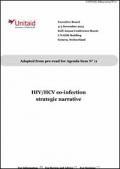
Resource | Publications,
Until recently, diagnosis and treatment of HCV was complex. Suitable tools for screening and diagnosis were lacking, and treatment was hampered by limited efficacy and severe side effects. New medicines for the treatment of HCV have revolutionized HCV treatment. Combinations of these new medicines, which are generally well-tolerated and effective, can cure HCV in 12 weeks. This offers a huge opportunity to address HCV, in particularly among HIV/HCV co-infected people, who are more vulnerable as they progress faster to serious disease than HCV mono-infected people.
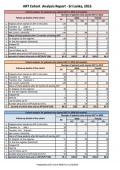
Resource | Data Sheets,
This document provides Cohort analysis for patients who started ART in 2013 (12 months), Cohort analysis for patients who started ART in 2012 (24 months) and Cohort analysis for patients who started ART in 2009 (60 months).
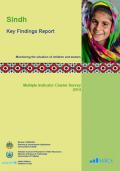
Resource | Publications,
A diverse set of data is a pre-requisite for effective planning and governance. The Sindh Multiple Indicator Cluster Survey (MICS) is an important source of accurate and reliable data on a comprehensive set of socioeconomic indicators.
The purpose of the survey is to provide statistically valid data for researchers, policy makers, planners, and individual’s vis-à-vis evidence based decision, program and policy making, in-depth analysis and future forecast regarding human development. MICS is a unique source of information in which more than 120 indicators are covered on the basis of the province, 5 divisions, 28 districts as well as area of residence and background. MICS also provides high-quality data on household’s characteristics, child mortality, nutrition, child health, reproductive health, ante-natal health checks, child development, education and literacy, water and sanitation, wealth quintiles and poverty status.
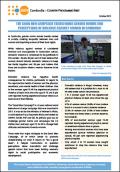
Resource | Publications,
In Cambodia, gender norms remain heavily rooted in society, creating inequality between men and women and depriving women of their basic rights. While violence against women is considered immoral and unacceptable in Cambodian culture, domestic violence is considered to be justifiable in this society. Nearly 60 per cent of men believe that women should tolerate domestic violence to keep her family together and 28 per cent believe that there are occasions where a woman deserves to be beaten.
The "Good Men Campaign" is a 5-year national social behavioural change campaign that was launched in 2011. Its primary goal was to challenge gender norms and encourage the 3.5 million men and boys aged 15 to 49 to change their attitudes and behavior towards women.
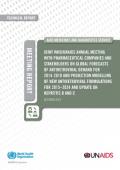
Resource | Publications,
The World Health Organization (WHO) and the Joint United Nations Programme on HIV/AIDS (UNAIDS) Secretariat organize an annual meeting with pharmaceutical companies and stakeholders to discuss antiretroviral (ARV) drug demand forecasts for adults and children.
The March 2015 meeting went beyond the usual three-year forecast by including a model of new ARVs that will be needed up to 2024. For the first time this year, the meeting also included a discussion on hepatitis B and C medicines.
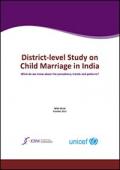
Resource | Publications,
The present study analyzes the prevalence and some key drivers of child marriage at the district level in India, using government data sources. The practice of child marriage persists across the country, with many northern states having the highest percentage of women married before the legal age. Although there has been a significant decline in child marriage for females throughout the country, especially for girls below the age of 15 years, child marriage continues to affect almost a third of all girls in India.
Among individual characteristics, the level of education of females has the most profound impact on the age they marry, irrespective of household wealth, locality and other characteristics. Further, in the districts studied here, Other Backward Class (OBC) and Scheduled Caste (SC) women tend to have the lowest mean age at the time of marriage, irrespective of their level of education, locality and economic background.
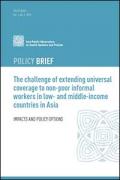
Resource | Publications,
Many low- and middle-income countries (LMICs) in Asia have adopted the goal of universal health coverage. In principle, universal coverage includes providing financial protection to the whole population. This is a goal. In practice, universal coverage cannot be achieved at once, but involves progress along a path towards achieving complete population coverage. This is especially true in LMICs, where resources are constrained and per capita health expenditures are low. Experience shows that LMICs generally begin on the pathway to universal coverage by implementing different prepayment mechanisms targeted at particular sections of the population.
The implementation of prepayment mechanisms for non-poor informal workers in LMICs is a relatively new policy area, with many unresolved issues. Questions being raised are whether compulsory schemes such as social health insurance (SHI) are effective in covering nonpoor informal workers, whether voluntary schemes such as communitybased health insurance (CBHI) can be used to scale-up coverage of non-poor informal workers, and whether complete subsidization of non-poor informal workers can create perverse incentives for remaining in or moving into informal employment.
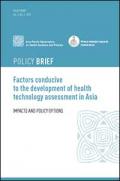
Resource | Publications,
With universal health coverage (UHC) high on the global health agenda, governments of many low- and middle-income countries (LMICs) have pledged to increase health investment in the scale-up of essential health services to meet the needs of their people. This has led to the recognition of health technology assessment (HTA) as a necessary tool for setting priorities especially in the UHC context. This Policy Brief was developed based on experiences from six settings – China, Indonesia, the Republic of Korea, Malaysia, Thailand and Viet Nam – which represent approximately one sixth of the world’s population. The Policy Brief highlights the problems and evidence concerning HTA development in the Asia Pacific region and makes recommendations that may be potentially applicable to settings in other regions.
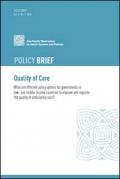
Resource | Publications,
This policy brief aims to provide guidance for policy-makers in low- and middle-income countries (LMICs) in the Asia Pacific region on actions that governments can take to improve and regulate quality of care in ambulatory care services. There is increasing evidence of the very poor quality of ambulatory care in LMICs. Current strategies to address quality of care in these countries such as accreditation have tended to focus on hospitals. But ambulatory care accounts for the largest share of out-of-pocket expenses in LMICs and is key to addressing the double burden of communicable and noncommunicable disease.
This brief draws on available evidence of factors influencing quality of care and strategies to improve quality of care in the ambulatory care sector. Although there is a large body of literature addressing quality of care in high-income countries, this is an emerging field of research for LMICs.





